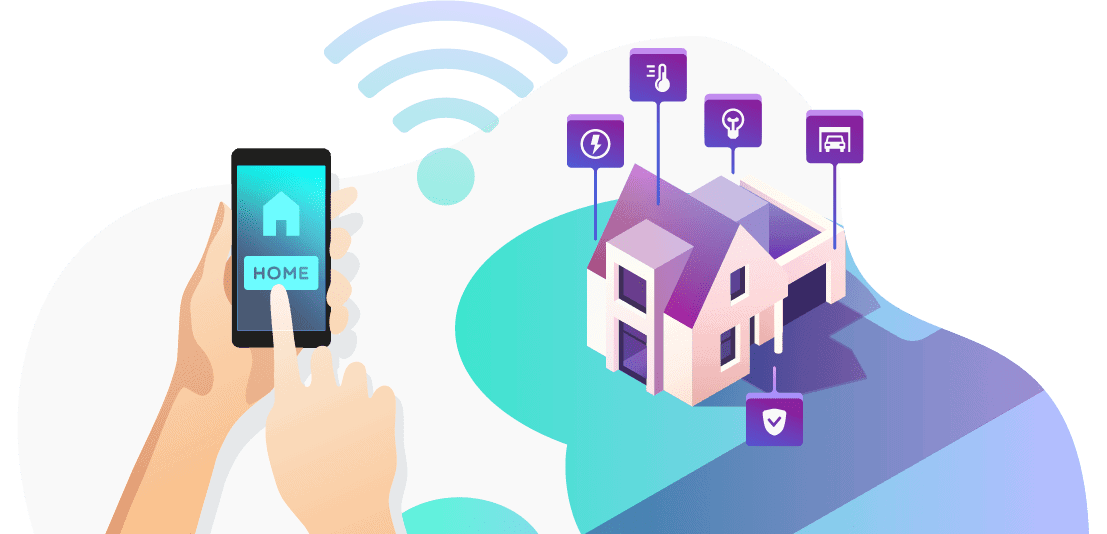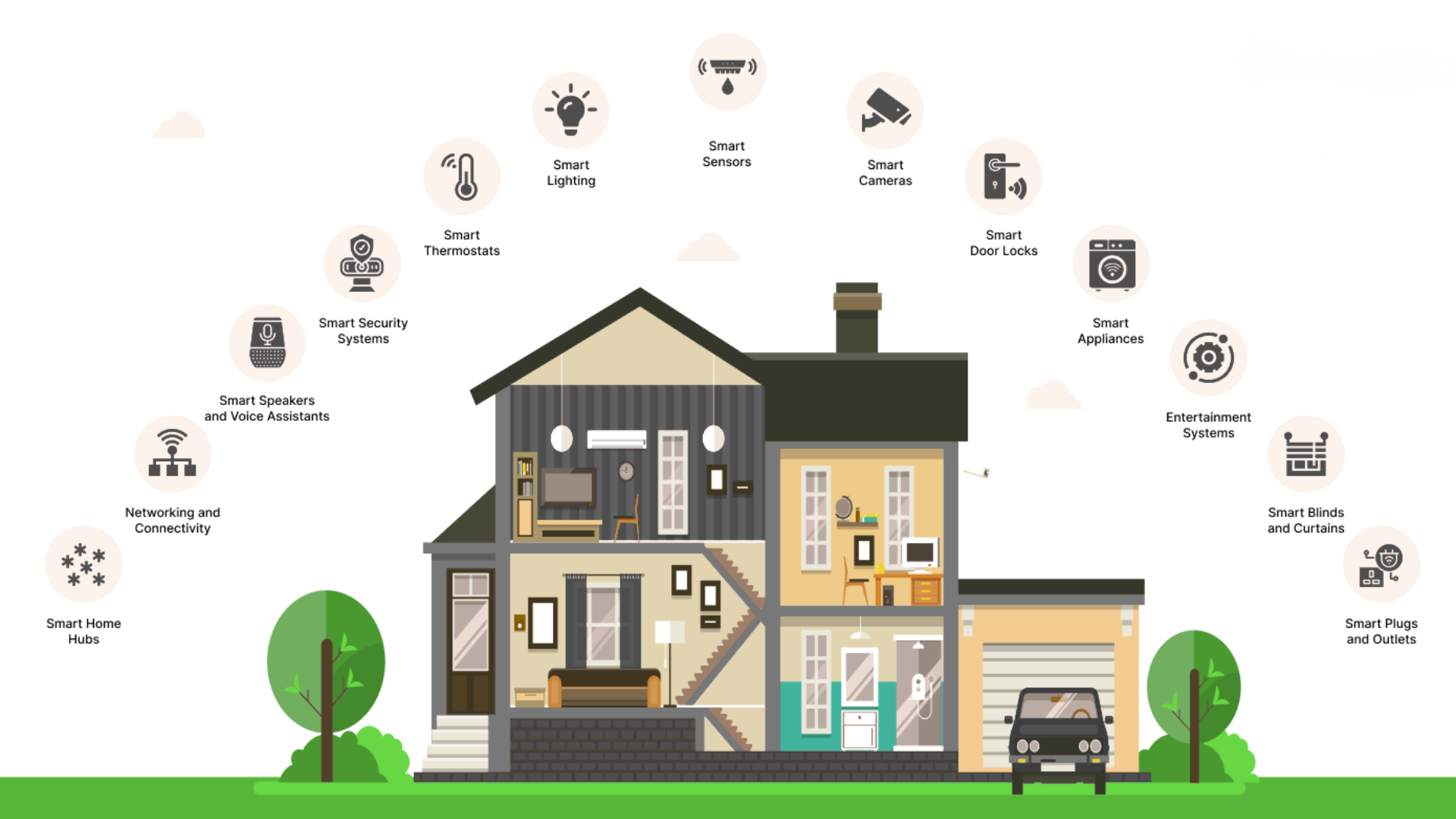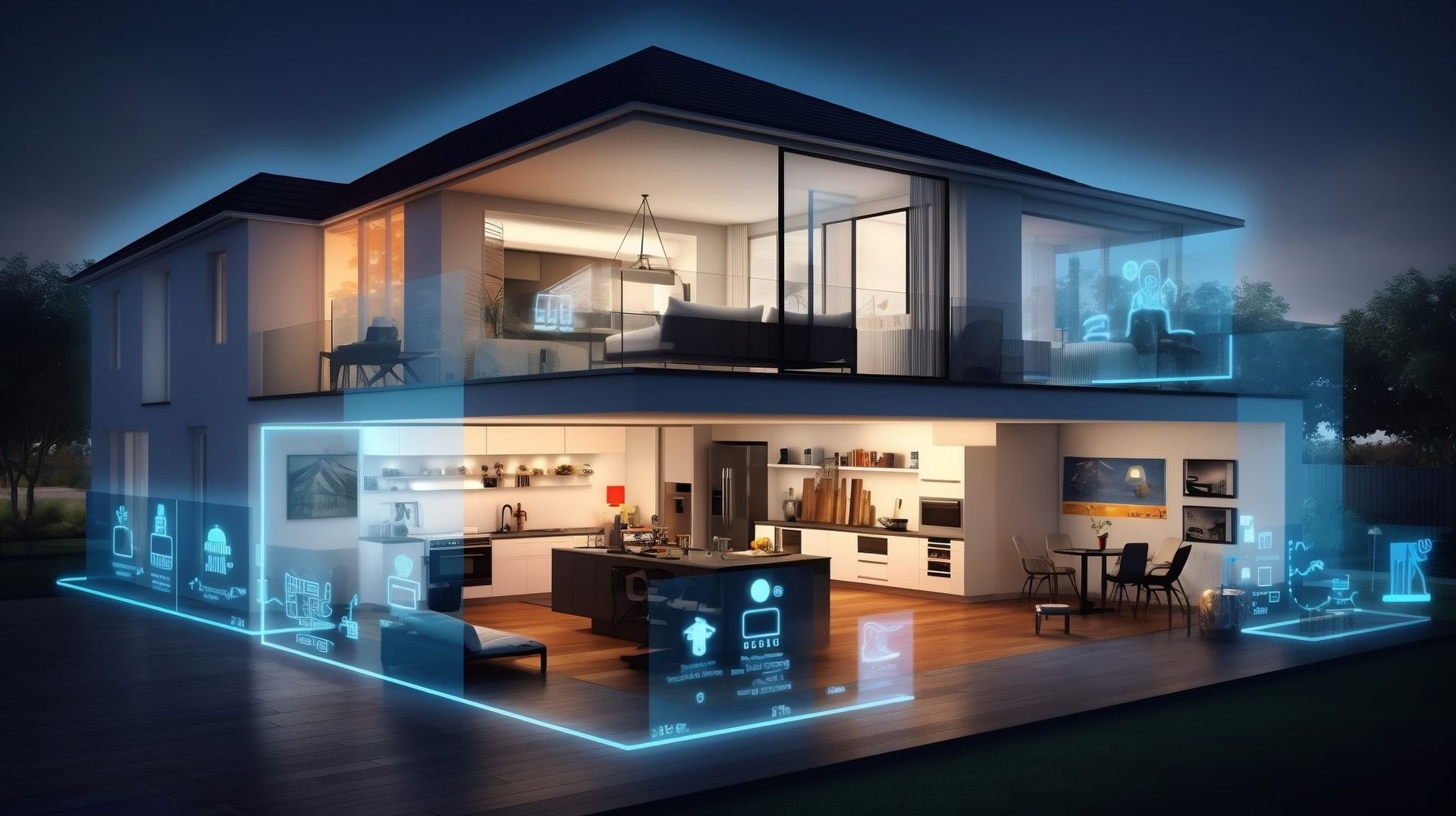Welcome to the future of home living! Smart home automation is revolutionizing how we interact with our spaces, offering convenience, security, and efficiency at our fingertips. In this guide, we'll explore the basics of smart home automation, essential components, and how to set up your own smart home system.
What is Smart Home Automation?
Smart home automation refers to using technology to control and manage various household functions automatically and remotely. From lighting and heating to security and entertainment, smart home devices make life easier and more efficient. A smart home allows you to automate tasks, monitor your home in real-time, and control your devices from anywhere using a smartphone or voice commands.
Why Consider a Smart Home?
Convenience and Comfort
Imagine walking into a room and having the lights turn on automatically or adjusting your thermostat with a simple voice command. Smart home devices make everyday tasks more convenient and enjoyable.
Enhanced Security
Smart home systems offer advanced security features such as surveillance cameras, smart locks, and motion detectors. These devices can be monitored and controlled remotely, providing peace of mind whether you're at home or away.
Energy Efficiency
Automated systems can optimize energy usage, reducing utility bills and your carbon footprint. For example, smart thermostats learn your schedule and adjust heating and cooling settings to save energy.
Essential Components of a Smart Home
To set up a comprehensive home automation system, consider integrating the following components:
1. Smart Lighting
Smart lighting systems offer customizable lighting solutions that can be controlled via smartphone apps or voice commands. You can set schedules, adjust brightness, and change colors to suit your mood.
2. Smart Security Systems
Enhance your home security with smart systems that include features like motion sensors, door/window sensors, and sirens.
3. Smart Speakers and Voice Assistants
Integrate voice assistants like Amazon Alexa into your home automation system for hands-free control. You can use voice commands to control lights, locks, and more.
4. Networking and Connectivity
A robust Wi-Fi network is essential for smart home devices to communicate with each other. Consider mesh Wi-Fi systems for broader coverage and reliability.
5. Smart Home Hubs
A smart hub acts as the central control unit of your smart home. It connects all your smart devices and allows them to communicate with each other.
6. Smart Sensors
Smart sensors, such as motion detectors and door/window sensors, enhance your home security and automation. These sensors can trigger actions like turning on lights or sending alerts to your phone.
7. Smart Cameras
Monitor your home in real-time with smart security cameras. These cameras offer features like motion detection, night vision, and two-way communication.
8. Smart Door Locks
Enhance your home security with smart locks that allow you to control entry to your home remotely and provide keyless access through a smartphone app or keypad.
9. Smart Appliances
Smart appliances offer advanced features such as remote control, energy monitoring, and integration with other smart home systems.
10. Entertainment Systems
Smart entertainment systems include smart TVs, streaming devices, and home theater systems that can be controlled via apps or voice commands.
11. Smart Blinds and Curtains
Automate your window coverings with smart blinds and curtains. They offer motorized solutions that can be controlled remotely or set on schedules.
12. Smart Plugs and Outlets
Smart plugs and outlets allow you to control non-smart devices remotely. They can be scheduled to turn on and off automatically, adding convenience and saving energy.
How to Set Up Your Smart Home
Step 1: Choose Your Smart Hub
Select a smart hub that is compatible with most of the devices you plan to use. Amazon Echo is a great choice for beginners due to its wide compatibility and user-friendly interface.
Step 2: Install Smart Devices
Start by installing a few essential smart devices such as smart lights, a security camera, and a smart speaker. Follow the manufacturer’s instructions for setup and integration with your smart hub.
Step 3: Connect to Your Network
Ensure all your smart devices are connected to your home Wi-Fi network. This allows you to control them remotely through a smartphone app or voice assistant.
Step 4: Customize Settings
Use the app associated with your smart hub to customize settings for each device. Set schedules for lights, configure security alerts, and create automation routines that suit your lifestyle.
Step 5: Expand Gradually
As you become more comfortable with your smart home system, consider adding additional devices such as smart locks, plugs, and speakers. Gradually expanding your setup allows you to build a fully integrated smart home over time.
Future Trends in Smart Home Automation
The future of smart home automation looks promising, with advancements in artificial intelligence, machine learning, and IoT (Internet of Things) technology. Expect to see more integrated systems that offer seamless interoperability between devices, enhanced security features, and greater energy efficiency.
Conclusion
Smart home automation is transforming the way we live, making our homes more convenient, secure, and energy-efficient. By understanding the essential components of a smart home and following the steps to set up your system, you can enjoy the benefits of smart living. Start with a few key devices and gradually expand your setup to create a fully automated home that suits your needs.
Check the link in bio to buy the best smart home products and start your journey to smart living today!